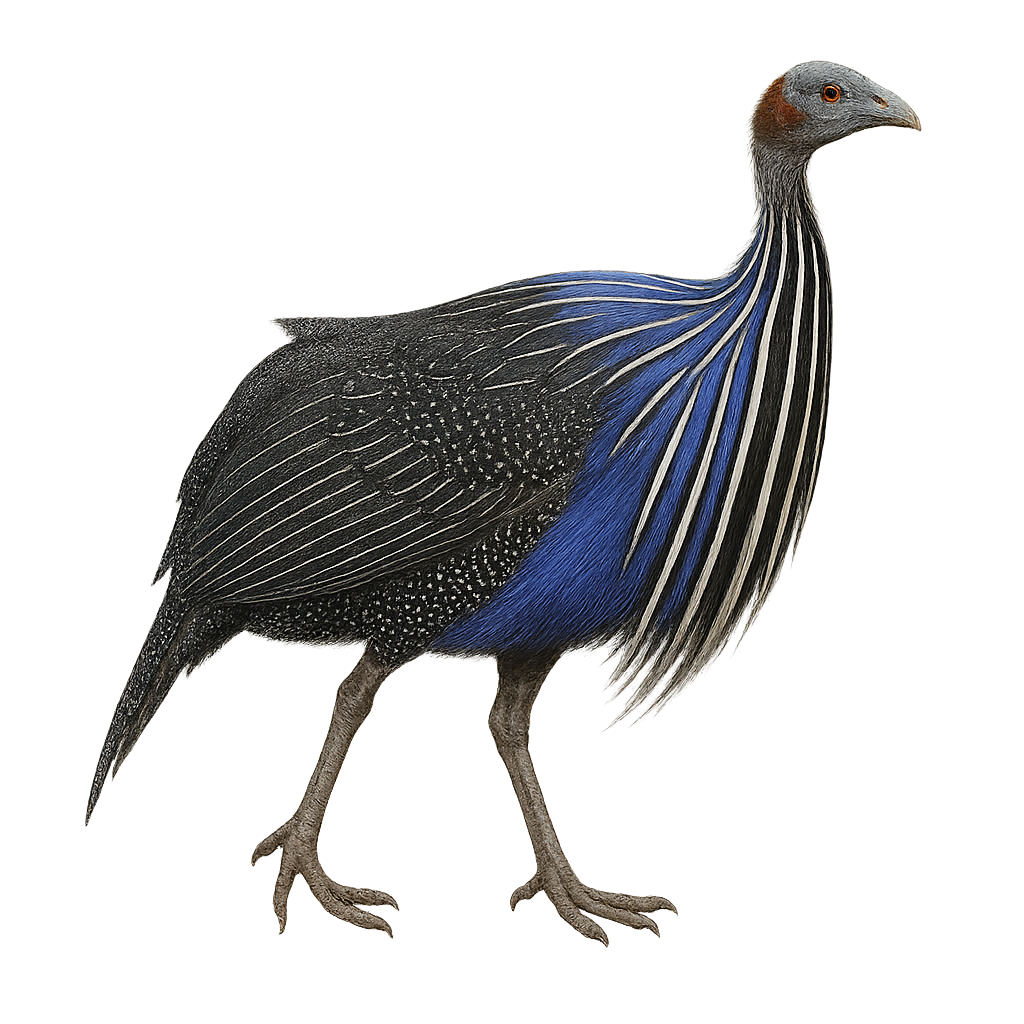Your wildlife photography guide.
Explore the vulturine guineafowl in detail, study its behavior, prepare your shots.
Where to observe and photograph the vulturine guineafowl in the wild
Learn where and when to spot the vulturine guineafowl in the wild, how to identify the species based on distinctive features, and what natural environments it inhabits. The WildlifePhotographer app offers tailored photography tips that reflect the vulturine guineafowl’s behavior, helping you capture better wildlife images. Explore the full species profile for key information including description, habitat, active periods, and approach techniques.
Vulturine Guineafowl
Scientific name: Acryllium vulturinum

IUCN Status: Least Concern
Family: NUMIDIDAE
Group: Birds
Sensitivity to human approach: Suspicious
Minimum approach distance: 10 m
Courtship display: April to June
Incubation: 23-26 jours
Hatchings: April to July
Habitat:
Savannas, dry forests, shrublands
Activity period :
Primarily active during the day, with peak activity in the morning and late afternoon.
Identification and description:
The Vulturine Guineafowl, Acryllium vulturinum, is a striking bird known for its vibrant plumage and graceful appearance. Native to the arid regions of East Africa, this bird is distinguished by its bare blue head, surrounded by a collar of black and white feathers. Its body is covered with bright blue feathers speckled with white spots, creating a striking contrast. It lives in social groups, often seen moving together in search of food. Although it prefers walking, it can fly short distances when threatened. Its distinctive call echoes through the savannas and dry forests it inhabits.
Recommended lens:
400mm – adjust based on distance, desired framing (portrait or habitat), and approach conditions.
Photography tips:
To photograph the Vulturine Guineafowl, it is advisable to use a telephoto lens of at least 400 mm to capture the details of its plumage without disturbing it. Approach slowly and maintain a distance of about 10 m to avoid startling it. Look for it early in the morning or late in the afternoon when the light is soft and highlights the vibrant colors of its feathers. Be patient and discreet, as this bird can be suspicious of humans.
The WildlifePhotographer App is coming soon!
Be the first to explore the best nature spots, track rutting seasons, log your observations, and observe more wildlife.
Already 1 439 wildlife lovers subscribed worldwide

